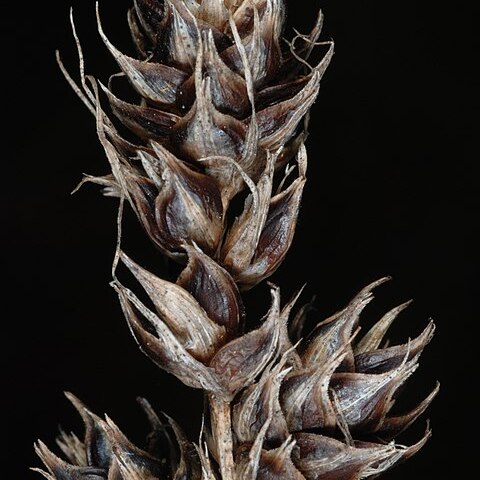Densely cespitose; stems 3–6 dm, rough above; lvs 4–8 mm wide, the sheath loose, ventrally thin and pale, dorsally septate-nodulose and white with green veins or mottled; infl dense, ovoid or oblong, 1–3 cm, at least the lower spikes distinguishable; bracts setaceous, shorter than the head; scales with a slender tip surpassing the base of the beak of the subtended perigynium; perigynia yellowish-brown, shining, ovate, abruptly contracted into a rough-margined, bidentate beak about a third as long as the body; achene suborbicular, the style-base expanded into an ovoid body 0.8 × 0.3–0.5 mm; 2n=58. Dry open soil and prairies; O. and sw. Ont. to Minn., S.D., and Wyo., s. to Ky. and Tex. Two weak vars.

